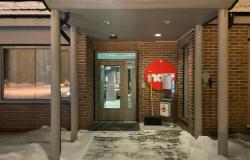When Lagmannsholmen is now to get a new lease of life, important guidelines are already in place. The old islet is surrounded by rich attractions for experiences of culture, history and the city’s identity; Bredalsholmen with its unique expertise in vessel protection, Bragdøya with its coastal layer, the Art Silo, the cultural school, the Kilden, the Vest-Agder Museum (which is now overdue to receive its last state funds for development), the successful and friendly architecture of the Fish Pier, the beautiful old customs house building from 1827 and “Skjeddet” from 1896 on Pier 6, where the city’s proud full-riggers have their wharf and their home.
Beyond this: The sea and the harbor basin. Inside: A quadrature with perhaps Europe’s best-preserved street plan from the Renaissance.
When the containers are moved, both the landscape and the possibilities open up. Anyone who listens already hears the expectant wishes of committed residents for a development with friendly and site-appropriate architecture, in harmony with both the proud historic lines to the rear and the new attractions around.
Lagmannsholmen has been an islet until recently. A home for some and part of a defense facility for the whole city. It has served as a harbor for larger schooners and a screen against the sea.
The opportunity is now there to re-establish the islet by excavating a channel. It may provide opportunities to finally realize the investigative work that in 2011 presented the report “National Museum Harbor in Kristiansand – Porto Franco”. Old vessels can be given their natural place, and this nationally important project will then be central to strengthening Kristiansand’s identity as a port city and highlighting its rich maritime history.
The city association’s purpose is to work for cultural-historical and conservation values in Kristiansand, and to create an understanding of the historical uniqueness of the city and its districts.
As has already been pointed out in the ongoing planning work: Lagmannsholmen is centrally exposed to the entrance to Kristiansand. It is an important coastal landscape that is included in the National Antiquities Register (KULA) of cultural-historical landscapes of national interest. It says, among other things, about this launch that new building measures should not detract from the maritime cultural heritage as part of the coastal landscape.
In 2002, the municipality of Kristiansand published the “Architectural Guide for Kristiansand” through the director of culture. An article by current urban development director Ragnar Evensen states, among other things: “An important principle in today’s planning debate is that the open lines of sight to the surroundings in Kvadraturen’s street run must be secured anyway. – And “The big small town will be in favor of utilizing the edge zone, which is clearly subordinate to the structure and buildings of Kvadraturen. One does not see concentrated urban growth as a goal in itself, but wants a moderate development in the edge zone, with buildings that do not exceed the square footage in height.” Here, Evensen has given us a good and important template for this project as well.
At the same time, we are looking forward to what is already developing: the soon-to-open Art Silo, the exciting plans for the museum to expand to be able to tell both the city’s maritime history and the more land-based one, and not least what is happening where Rådhusgata and Tollbodgata meet the sea. Because while competent forces will create good culinary experiences in the city’s beautiful old customs warehouse, the Foundation behind the world’s oldest operational full-rigger “Sørlandet” will give new life to the historically important “Skjeddet” on Pier 6. Where the sailing cultural heritage has its home when she is not sails around the globe with young people, and is also located on a centrally located wharf which is desired by many as a location for useful sightseeing boats.
And what opportunity for symbolic cultural marking is not there in this work. Skuta bears the name of the region, and Kristiansand’s ambition is to be both “Sørlandet’s home” and an anchorage, both in a concrete and figurative sense.
Let me therefore, in my enthusiasm for the many opportunities we face, launch a private proposal: A large digital screen on or near Pier 6. A screen that provides broad information to both visiting tourists and permanent residents, and marks the physical significance of this seaside area. The screen shows at all times where in the world the unique Fullrigger Sørlandet is and what the weather etc. it is experienced in real time – preferably with a live webcam. (Thus, the ship is always present and active, regardless of whether it is physically docked or heading towards the Azores.) In addition, the screen provides other broad, important and relevant information: Departure times for fjord boats and ferries, opening times and walking distance/route to surrounding museums, etc.
And if you are wondering why the chairman of the nearly 200-year-old Christianssands Byselskab writes this: The purpose of the Byselskabet is to work for cultural-historical and conservation values in Kristiansand, and to create an understanding of the historical uniqueness of the city and its districts. The company must also contribute to preserving and developing the cultural and physical environment – important buildings and the built environment, green areas, nature and vegetation.
Reidar Mosland, chairman of Christianssands Byselskab
Photo: Kubens, Valerie / Friend of the Fatherland
Tags: Culture proud history Lagmannsholmen
-





